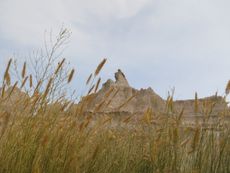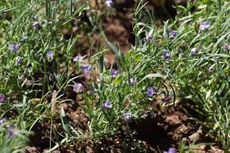Learn More About Green Manure Cover Crops


The use of green manure cover crops is a popular practice among many growers in the farming and agricultural industries. This method of organic fertilizing has numerous benefits for the home gardener as well.
What is Green Manure?
Green manure is a term used to describe specific plant or crop varieties that are grown and turned into the soil to improve its overall quality. A green manure crop can be cut and then plowed into the soil or simply left in the ground for an extended period prior to tilling garden areas. Examples of green manure crops include grass mixtures and legume plants. Some of the most commonly used are:
Green Manure Crop Benefits
The growing and turning of green manure cover crops provides additional nutrients and organic matter to the soil. When incorporated into the soil, these plants break down, eventually releasing important nutrients, such as nitrogen, that are necessary for adequate plant growth. It also increases soil drainage and water retention capabilities. In addition to adding nutrients and organic materials to the soil, green manure crops can be grown to scavenge leftover nutrients following the harvest season. This helps prevent leaching, soil erosion, and weed growth.
Making Green Manure
When making green manure cover crops, consider the season, the site, and the specific needs of the soil. For instance, a good green manure crop for fall or winter would be a cool-season grass like winter rye. Heat-loving crops, like beans, are good for spring and summer. For garden areas in need of additional nitrogen, legumes, such as clover, are ideal. Green manure crops should be turned just before flowering. However, it is also acceptable to wait until the crop has died off. Since green manure crops grow quickly, they make an ideal choice for amending soil prior to spring planting. Learning more about green manure crops can provide home gardeners with the tools necessary for acquiring the optimal soil quality. The healthier the soil, the greater gardening success.
Gardening tips, videos, info and more delivered right to your inbox!
Sign up for the Gardening Know How newsletter today and receive a free download of our most popular eBook "How to Grow Delicious Tomatoes."

Nikki Tilley has been gardening for nearly three decades. The former Senior Editor and Archivist of Gardening Know How, Nikki has also authored six gardening books.
-
 7 Best Trailing Plants For Hanging Baskets – Create A Delightful Summer Display
7 Best Trailing Plants For Hanging Baskets – Create A Delightful Summer DisplayHanging baskets are a staple of the summer patio. Use these plants to create trailing masterpieces that add beauty and elegance to your outdoor space.
By Melanie Griffiths
-
 Old-Fashioned Flowers And Plants That Will Transport You To Another Time
Old-Fashioned Flowers And Plants That Will Transport You To Another TimeFancy bringing some old world beauty and elegance to your space? These nine old-fashioned flowers can help you add a touch of nostalgia and romance
By Mary Ellen Ellis
-
 Best Late Summer And Early Fall Cover Crops
Best Late Summer And Early Fall Cover CropsPlanting cover crops is a gift you can give to your garden’s soil. Read on to learn about planting cover crops in late summer.
By Bonnie L. Grant
-
 Sunn Hemp Plant Info – Learn Sunn Hemp Uses And Care
Sunn Hemp Plant Info – Learn Sunn Hemp Uses And CareSunn hemp grass is a warm weather grass. Click to learn more about Sunn hemp uses as well as helpful tips on growing Sunn hemp as a cover crop.
By Mary H. Dyer
-
 Native Cover Crops: Vegetable Cover Cropping With Native Plants
Native Cover Crops: Vegetable Cover Cropping With Native PlantsAre there any benefits to using native plants as cover crops? Click here to learn more about vegetable cover cropping with native plants.
By Laura Miller
-
 What Is Field Brome – Information About Field Brome Grass
What Is Field Brome – Information About Field Brome GrassField brome grass can be used as a cover crop to control erosion and enrich the soil. For more information, click the following article.
By Laura Miller
-
 What Is Western Wheatgrass – How To Grow Western Wheatgrass
What Is Western Wheatgrass – How To Grow Western WheatgrassWheatgrass is native to North America and graces the Southwest, Great Plains and mountainous regions of the western U.S. It has some erosion control benefits but using western wheatgrass for grazing is the primary purpose. Learn more about it here.
By Bonnie L. Grant
-
 What Is Chickling Vetch – Growing Chickling Vetch For Nitrogen Fixing
What Is Chickling Vetch – Growing Chickling Vetch For Nitrogen FixingWhat is chickling vetch? Also known by various names such as grass pea, white vetch, blue sweet pea, Indian vetch, or Indian pea, chickling vetch is a nutritious legume grown to feed livestock and humans in countries around the world. Learn more about the plant here.
By Mary H. Dyer
-
Establishing Kura Clover: Learn How To Grow Kura Clover Plants
You no doubt have heard about the four-leaf clover, but few gardeners are familiar with kura clover plants. Kura is a forage legume and if you are interested in growing kura as a groundcover or establishing kura clover for some other use, this article will help.
By Teo Spengler
-
 What Are Austrian Winter Peas: A Guide To Growing Austrian Winter Peas
What Are Austrian Winter Peas: A Guide To Growing Austrian Winter PeasWhat are Austrian winter peas? Also known as field peas, Austrian winter peas have been grown around the world for centuries, primarily as a valuable source of nutrition for humans and livestock. Click this article for info on growing Austrian winter peas.
By Mary H. Dyer